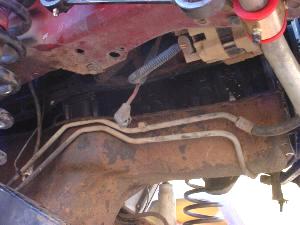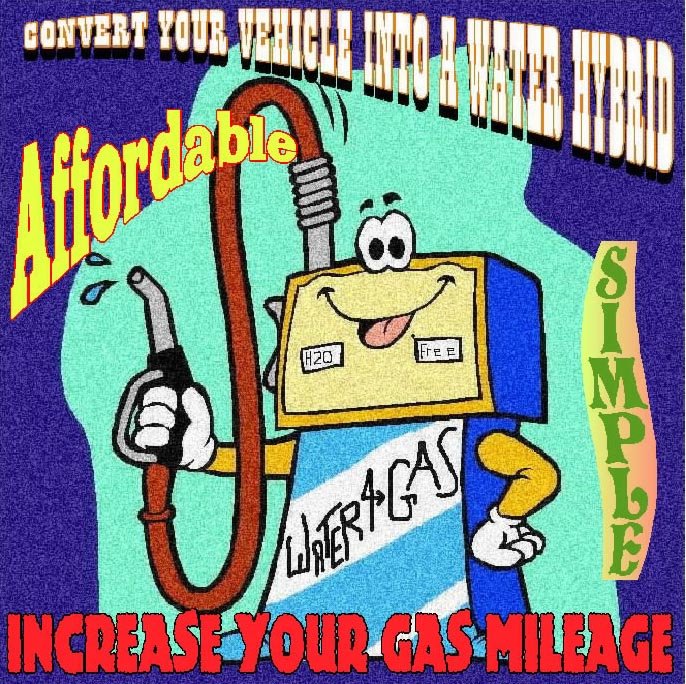
Method I did not choose to use -
LIFTING ENGINE OFF ONE MOUNT TO REMOVE OIL PANNot that I wasn't up to the task of unmounting one motor mount and pivoting up one side of the engine with a jack - because I just had to do that a week ago when I got my ratchet wedged between the oil filter adapter body and the frame (another story for another day) - but, the method of jacking up the Cherokee and letting the suspension hang down seemed more like the way it should be done.
-------------------------------------------------------------------
 LISTED JUST FOR AN EXAMPLE OF HOW UNHELPFUL SOME ARTICLES CAN BE"1. Remove oil pan"
LISTED JUST FOR AN EXAMPLE OF HOW UNHELPFUL SOME ARTICLES CAN BE"1. Remove oil pan" He is kidding, right? This is the most difficult part of the whole job! And, he says nothing about how this happens? Fairy dust, maybe?
"4. Using something plastic, so you do not scratch anything push the top part out. It will be a semi rigid half circle." Yes, but, no! Not a plastic paint brush handle! That doggoned seal that has been in there for well over 100,000 miles is NOT going to just ease on out! Trust me, a brass punch is the solution. Or, if one is not obtainable - use a steel punch VERY CAREFULLY!!! and a pair of STRONG needle nose pliers once you get it started out.
"17. Don't be surprised if it doesn't seal the first time. It's kind of a hit or miss thing. Just a poor design IMO."This may be the most accurate statement he makes if one were to only have his article to rely on to get the job done right the first time!
----------------------------------------------------------------------
 THE INSTRUCTIONS IN THIS ARTICLE WILL GET THE JOB DONE"To start with, depending on how much lift you’ve got, you’ll want to jack up the vehicle by the frame, pull the wheels, and let the front axle hang down to give you clearance to get the oil pan out."
THE INSTRUCTIONS IN THIS ARTICLE WILL GET THE JOB DONE"To start with, depending on how much lift you’ve got, you’ll want to jack up the vehicle by the frame, pull the wheels, and let the front axle hang down to give you clearance to get the oil pan out."I will add that it does not matter HOW MUCH LIFT your XJ has.
Jack it up and let that front end hang.
Unbolt the shock absorbers.
Unbolt the stabilizer bar to frame brackets.
Unbolt the track bar from the passenger side bracket (why disturb the socket on the driver side?).
Disconnect or at your discretion get the transmission lines out of the way.
You are ready to drop the pan and slide it out back and under the transmission. The oil pump pick-up tube will need to be maneuvered around (some say unbolt the oil pump by tilting the pan and getting your arm in there - I say, WHY?!)
The rest of the article is pretty much enough info to properly get the job done. One other noteworthy thing to do is to clean up the slot edge where the rear main upper seal is slid into. The edges may have built up a hard crusty ridge over the thousands of miles which may make sliding in the new upper half a very difficult job, or, worse yet, damage the new rubber seal you are carefully trying to install. Some emery paper or skillful working with a very small file should do the job.
This is about the filthiest job I have ever performed on a vehicle. Have lots of Goop or D&L hand cleaner and a hand brush handy to get the grime out of your skin.

 Method I did not choose to use -
Method I did not choose to use - 
 THE INSTRUCTIONS IN THIS ARTICLE WILL GET THE JOB DONE
THE INSTRUCTIONS IN THIS ARTICLE WILL GET THE JOB DONE



